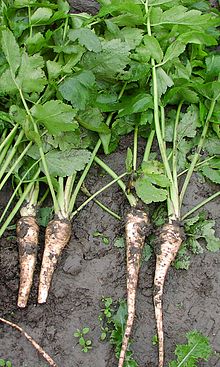Description
🚚 The fastest delivery time : 2-day delivery.
🐝 Supplier / Origin : Carrot (Hong Kong or Yunnan), Green radish (Hong Kong), White carrot (France or the Netherlands), White radish (Yunnan, China)
🔖 Certification : HKORC or EU (on different species)


🌱 Supplier introduction :
We specialise in gluten-free, dairy-free, white sugar-free, low-sugar, additive-free, preservative-free, allergy-free, plant-based alternatives, all of which contribute to a healthier microbiome.
Please be open to "less processed" foods
As we strive to create products that retain most of their nutritional value, they may not look like the “highly processed” foods that can sit on supermarket shelves for more than two years.
Our products may...
- Dispersion - because we do not use binders and emulsifiers
- Goes bad faster - because we don't use preservatives
- The colors may not look as bright - because we don't use any artificial colors
- The flavor is a little different every time - because every batch is made with real ingredients, just like no apples are the same on the tree.
🛍 Product Information :
When talking about radishes, we must first understand the similarities and differences between white radishes, green radishes, and red radishes.
White radish

White radish and green radish are from the same family but different species. White radish is the root of the cruciferous plant radish; green radish is the root of the cruciferous plant turnip. White radish is white in color, soft and juicy; green radish is green in color, firm and less juicy.
White radish is spicy and cool in nature when eaten raw, and sweet and warm in nature when cooked. It was called radish in ancient times. It can detoxify fish, eliminate stagnation, and relieve alcohol toxins. Squeezing fresh radish juice can eliminate gallstones and prevent their formation. Adding radish to hot pot can prevent the soup base from being too dry. It is a very good ingredient.
Green radish

Green radish tastes sweet, bitter and neutral in nature, and was called turnip in ancient times. According to the description in "Food Materia Medica" by He Kejian of the Ming Dynasty: "It is non-toxic, beneficial to the five internal organs, helps digestion and replenishes qi, makes people fat and healthy, and is very delicious when eaten with mutton." It is often eaten raw in winter by northerners to detoxify coal gas, and is truly a good health product.
carrot

Carrots are from a completely different family from the above two. They are the roots of the Umbelliferae plant Daucus carota. Hong Kong people call them Ganxun, and they were called carrots in ancient times. The so-called Hu refers to the Hu people, that is, foreigners. During the Wei, Jin, Southern and Northern Dynasties, the Five Barbarians invaded China and formed the Sixteen Kingdoms, which occupied most of the northern territory of my country. The Jin Dynasty was in a safe place and occupied the south. The north and the south confronted each other, which was known in history as the Southern and Northern Dynasties. It was divided for nearly 400 years and was finally unified by Emperor Wen of the Sui Dynasty, Yang Jian, who ushered in the prosperous Sui and Tang Dynasties. Pepper, sesame seeds (sesame, hemp seeds), walnuts (walnuts), cucumbers (Hong Kong people call them cucumbers, domestic people call them cucumbers, and old cucumbers when they are old), etc., are obviously imported from foreign countries.
Carrots are sweet and neutral in nature. They were called carrots in ancient times. They are native to Persia, which is now Iran, and were brought to China by the Mongols. It is non-toxic, can relieve gas, replenish the middle, benefit the chest, diaphragm, intestines and stomach, and calm the five internal organs. It is rich in vitamin A and is used to treat vitamin A deficiency such as dry cornea and night blindness. Its efficacy is the same as that of the traditional Chinese medicine Atractylodes. Eating too much carrots can cause yellowing of the skin, which will gradually disappear after stopping eating.
Root Parsley | Parsnips

Although it looks like a carrot and is also called a white radish, it is a completely different product. It is the root of parsley.
"Parsnip" is abbreviated as: Parsnip, which belongs to the Apiaceae family and is native to Europe. It is commonly known as "celery radish" and is also called parsnip, American parsnip, European parsnip, European radish, celery radish, European angelica, and white sweet potato.
"Parsnips" is also known as celery radish, parsnips, European angelica, and white sweet asparagus. Parsnip has a long history and has been cultivated since ancient Greece and Rome. The white fleshy roots of European parsnip are large and prominent, and the roots are the main edible part. The fleshy root of "Parsnip" has a central column, and the outer fleshy part has a loose texture. The longer the root grows, the looser the flesh and the harder the central column. It has a high carbohydrate content and is nutritionally similar to potatoes, compared to carrots.
"Parsnip" has strong vitality and can grow smoothly in cold places. Its fleshy roots can safely spend the winter in the fields. Even if the leaves are frozen in sub-zero temperatures in winter, the underground roots can continue to sprout and grow in the spring of the following year. The roots that have experienced winter frost will become twice as sweet. In addition, "Parsnip" is resistant to high temperatures and can still grow vigorously at an average temperature of 28°C, but it is suitable for deep, well-drained, fertile sandy loam. In Europe and the United States, because "Parsnips" are easy to grow, they were the main ingredient for making pig feed before corn became popular.
Since the ancient Roman era, there have been records of local residents eating "Parsnips". The second emperor of the ancient Roman Empire, "Tiberius", had a special liking for "Parsnips". Because the weather in areas with high latitudes is particularly cold, the "Parsnips" grown in these areas can produce a sweeter and more delicious taste. Therefore, "Tiberius" would specially order people to transport this thing from the northern Gaul region (now France) to Rome every year to be made into a delicacy.
Parsley is grown as a root vegetable, namely Hamburger root parsley ( P. crispum Radicosum Group, syn. P. crispum var. tuberosum ). The roots of this type of parsley are much thicker than those of parsley grown for its leaves. Although rarely used in the UK and US, root parsley is common in Central and Eastern European cuisine, where it is used in soups and stews, or eaten raw as a snack (similar to carrots).
Although root parsley looks similar to parsnips, one of its closest relatives in the Apiaceae family, the flavor is very different.
Since parsley is not returned often and it can be produced for a long time, its quality may sometimes soften or shrink slightly.
🥘 Recipe:
🔅Notes:
















